POWER OF THREE
Hugs and giggles welcome the BAZAAR crew at the home of Aliya and Farouk Khan Collection, with Zena and Leila Khan radiating delight. The energy and cheeriness of the sisters immediately lift spirits, while the queen of this beautiful castle, Aliya Akbar, enters with a captivating aura of confidence. This is the reason we are here: to catch a glimpse of the lifestyle these enterprising women lead and how they relay inspiration. Aliya is of the collecting duo Aliya and Farouk Khan, who have put together The AFK Collection, the most seminal selection of Malaysian contemporary art. As doyennes of Asian art, they are both major patrons collecting and speaking globally at round tables such as the Terrace Talks of Art Dubai. Aliya is considered one of Asia’s most important female art collectors by museums like the Tate Gallery. She now engages the Pakistani contemporary art scene through collecting and supporting residencies, though Malaysia remains as her serious focus. Her passion runs through her daughters; Leila is the collections and administration manager at The AFK Collection, while Zena, as curator, spends most of her time scouting masterpieces, from London’s Art Frieze to Biennale. Explaining the aesthetics of the monumental artwork, Aliya, Zena, and Leila conduct a tour of the house ending with their “personal treasures” in walk-in closets, adorned with Fendi Peekaboo bags.
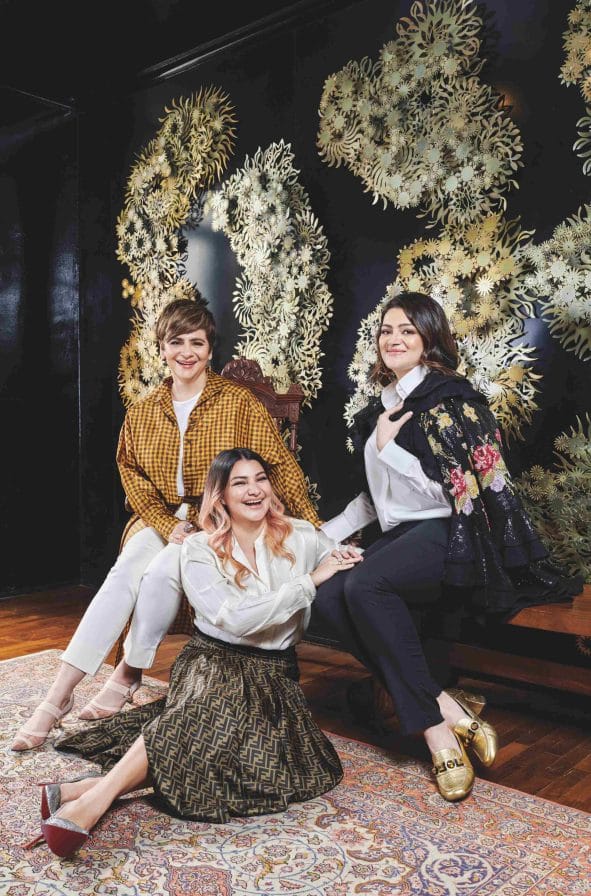

Like magpies, the first thing to catch our attention is Zena’s own-produced jewellery under the label Zena Khan. They are a form of fine art, beautifully crafted and made with passion. Zena explains the ring on Aliya’s finger, one which she created especially for her mother. “I design rings for women to wear every day. Hand-carved to fit in between the grooves of the fingers, the rings hug the fingers and sit comfortably, not disturbing our busy daily lives,” Zena says. Mila, Leila’s one-year-old daughter crawls into the room with wide-eyed glee, inquisitive of the visitors in her grandparents’s home, and speeds towards the toy-car-shaped ceramic artwork of Umi Baizurah. Aliya catches her in time, justifying the position of Baizurah’s artwork hidden behind Ahmad Fuad Osman’s huge stainless steel …hantuhantuhantuhantuhantuhan…, 2013. “I have to hide these ceramic sculptures or Mila would want to touch them. To be honest they are begging to be held. They take the shape of children’s toys, as Baizurah was inspired while watching her children play,” Aliya exclaims. Umi Baizurah looks beyond classic ceramic plates and jars to make sculptures that experiment with different raw materials, types of clay, and found objects. The Untouchable Series takes a round feminine form with floral motifs and lustrous glaze. It sits on a concrete pillar, symbolising a strong dedicated woman. The raw and rustic finish to the base of her polished ceramics shows the attempts she has done with this unforgiving and difficult medium.
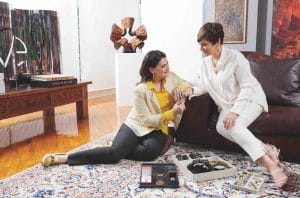
Zena Khan explains the ring she designed for her mother, Aliya Akbar, while Begarasi, 2019 stands proudly on a pedestal.

In Aliya’s walk-in closet, Zena and Leila Khan are keeping Mila entertained. Handbags, all from Fendi.
On the topic of challenging media, Leila refers to her favourite wooden sculpture by Anniketyni Madian. “She manipulates what is usually thought of as a masculine tool, making it look intricate and ladylike. With an amazing grasp of physics in her work, the flow in the wood is designed for the sculpture to balance rather than be mounted on a wall. It is completely free standing, personifying the independent and strong female artist,” Leila says. Anniketyni Madian embodies power and strength which come across from the material and tools chosen for her art. This sculpture was brought to life entirely by her, in her studio,” Leila continues. “The very intricate Pua Kumbu motifs integrate tradition with contemporary elements. Originally from Sarawak, she stylises this motif to comment on the hierarchy of women, elevating their position in Malaysian society,” Zena adds. Believing strongly in her culture, heritage, and religion, and with faith in herself, Anniketyni Madian breaks the gender binary with her pieces, and ultimately brings craft and legacy into contemporary consciousness.
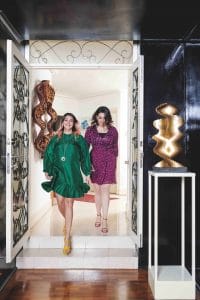
The dynamic duo Leila and Zena Khan, walking through the artworks of The AFK Collection.

Every bedroom in the house is filled with Malaysian artwork
The foremost contemporary female artist, in Aliya’s opinion, is Shooshie Sulaiman, who brings contemporary Malaysian art to the forefront of the international arena. “Always pushing boundaries with her wide range of artworks, she often uses installation. Her monumental piece at the Yokohama Triennale was placed at the front of the museum, leaving Ai Weiwei’s behind hers,” claims Aliya. “When creating 2D artwork, she uses strong mixed media. Like many Malay artists, she reminisces, has a strong connection to earth, using soil, wood, and leaves in her art. Her paintings are about recognising her identity as a Malaysian and Malay Muslim artist. Although a female artist, her craft goes beyond the female self,” Aliya explains.

A powerful leader, Aliya Akbar is a role model for her daughters
Female artists are not necessarily feminist activists, as Aliya points out. They will naturally highlight matters from a female’s perspective. “In my view, there is no gender barrier in creative activities. Nowadays, the landscape is changing and women are making their presence felt especially in the arts. It is an avenue in some societies for women to freely express themselves,” says Aliya. When asked why their roles are important, the three lively ladies claim that assembling great collections in galleries and museums inspires a more inventive community. Encouraging people to think outside the box leads to advancement in other fields, too. “Culture is the badge of distinction in an ever-increasing homogeneous world. Artists observe and record the present through their creations. It is important to be a patron by acquiring their work to promote their creativity,” Aliya ends. Like a stroke of genius.
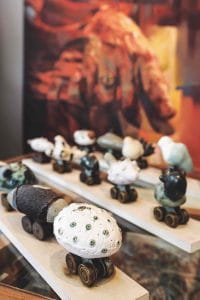
Umi Baizurah creates exciting ceramic sculptures mixed with found items
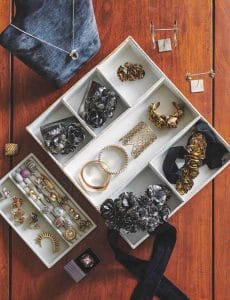
Armour-like pieces from Zena’s eponymous label, crafted from precious metal



